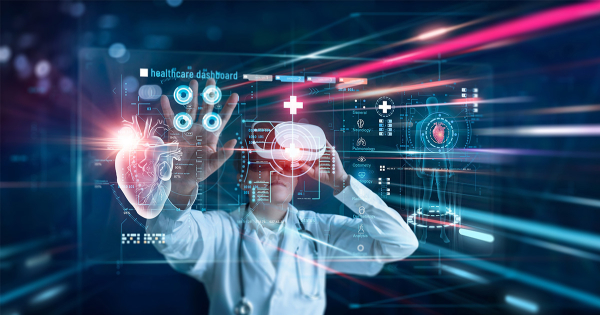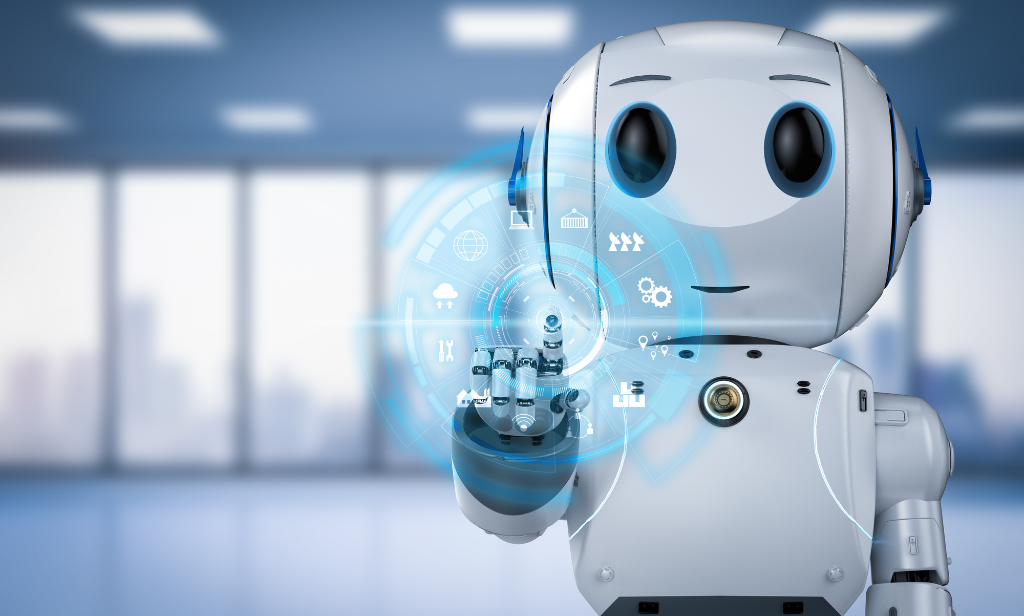In 2025, the healthcare industry is undergoing an exciting transformation thanks to rapid advancements in technology. From AI-powered diagnostics to telemedicine and wearable health devices, technology is not just improving healthcare; it’s reshaping how we approach wellness and patient care.
But how exactly are these innovations impacting the healthcare sector, and what can we expect moving forward? Let’s dive in.
The Rise of AI and Machine Learning in Diagnostics
In 2025, artificial intelligence (AI) and machine learning (ML) have become essential tools in diagnosing diseases faster and more accurately than ever before.
These technologies are now capable of analyzing vast amounts of medical data, from imaging scans to genetic sequences, in mere seconds. This means doctors can identify conditions like cancer, heart disease, and neurological disorders at earlier stages, often before symptoms even appear.
For instance, AI-powered algorithms can analyze X-rays and MRIs, flagging potential concerns that might otherwise go unnoticed. By streamlining the diagnostic process, doctors can make more informed decisions, and patients benefit from quicker treatments and better outcomes.
Telemedicine: Revolutionizing Access to Care
Telemedicine has come a long way since its early days. Today, it’s not just about video calls with doctors—it’s a fully integrated system that allows patients to receive medical consultations, prescriptions, and even remote monitoring from the comfort of their homes.
In 2025, telemedicine is being used for everything from routine check-ups to mental health therapy. With virtual consultations, patients can see doctors without the hassle of scheduling an appointment or traveling long distances. This has been particularly beneficial for those living in rural or underserved areas where access to healthcare providers is limited.
Moreover, telemedicine is offering more personalized care. Advanced remote monitoring tools, connected through secure networks, allow doctors to track patients’ vital signs in real-time. From blood pressure to glucose levels, these systems alert healthcare providers to any concerning changes, enabling them to take proactive measures before a serious health crisis occurs.
Electronic Health Records (EHRs): Streamlining Patient Care and Data Management
In 2025, Electronic Health Records (EHRs) have become essential in improving the efficiency and accuracy of healthcare. These digital records replace traditional paper systems, providing healthcare providers with immediate access to comprehensive patient data, such as medical histories, lab results, and medications. This quick access reduces medical errors, enhances decision-making, and improves patient outcomes.
Additionally, EHR systems, such as the one developed by Elation Health, are now designed for seamless data exchange between different healthcare providers, ensuring that patient information is available wherever needed, which is particularly valuable in emergencies or for patients receiving care from multiple specialists.
EHRs also foster predictive analytics in healthcare by aggregating data from various sources, such as lab results, wearables, and patient visits. This allows healthcare professionals to anticipate potential health issues before they arise, improving preventive care.
Furthermore, EHR systems are enhancing patient engagement by offering portals that allow individuals to access their own health information, schedule appointments, and communicate with providers. In 2025, EHRs are playing a central role in creating a more interconnected, efficient, and patient-centered healthcare system.
Wearable Health Devices: A Personal Healthcare Revolution
Wearable technology has been a game-changer in how we monitor and manage our health. In 2025, wearables are not just tracking steps or calories burned; they are continuously collecting health data, giving both users and healthcare professionals a real-time overview of their health status.
For example, smartwatches can now detect irregular heart rhythms, alerting users to potential signs of arrhythmia or other cardiovascular issues. Wearable glucose monitors are helping those with diabetes keep their blood sugar levels in check without the need for constant finger pricks. These devices sync with apps and health platforms, providing patients and doctors with valuable insights into a person’s ongoing health.
Additionally, AI and predictive analytics are starting to work in tandem with wearables. By analyzing patterns in a person’s data over time, algorithms can predict potential health problems before they arise, offering users personalized recommendations for healthier living.
Robotics: Precision and Efficiency in Surgery
Surgical robots, which were once a futuristic concept, have become a staple in operating rooms by 2025. These robots are designed to assist surgeons with tasks that require extreme precision, such as minimally invasive surgeries. They allow for smaller incisions, faster recovery times, and reduced risk of complications.
In some cases, robots are even performing surgeries autonomously under the supervision of human experts. With the aid of advanced imaging technologies and machine learning, robots can now perform highly complex surgeries with unmatched accuracy, making previously risky procedures more routine and successful.
Blockchain: Enhancing Data Security
As healthcare becomes increasingly digitized, protecting sensitive patient data has become a priority. In 2025, blockchain technology is playing a significant role in ensuring the security and integrity of medical records. Blockchain creates a decentralized and tamper-proof system, making it virtually impossible for hackers to alter or steal medical data.
With blockchain, patients have greater control over their own medical histories. They can grant and revoke access to their health records, ensuring that only authorized personnel can view or update their information. This not only enhances privacy but also streamlines the process of sharing medical data across different healthcare providers, reducing errors and improving care coordination.
Personalized Medicine: A New Era of Tailored Treatments
One of the most exciting areas of healthcare innovation in 2025 is personalized medicine, where treatments are specifically designed for individuals based on their genetic makeup. Advances in genomics and biotechnology are allowing doctors to tailor treatments to a person’s unique genetic profile, ensuring maximum effectiveness and minimizing side effects.
By analyzing a patient’s DNA, doctors can predict how they will respond to certain medications or therapies. For instance, if a patient has a genetic variation that makes them more susceptible to adverse reactions from a particular drug, their treatment plan can be adjusted accordingly. This approach is revolutionizing fields like cancer treatment, where personalized therapies are being used to target specific cancer cells without harming healthy tissue.
The Future: What’s Next for Healthcare Technology?
Looking ahead, we can expect even more groundbreaking advancements in healthcare technology. From advancements in CRISPR gene editing to 5G networks enabling faster data transfers for remote surgeries, the future of healthcare is brimming with possibilities.
In 2025, the role of technology in healthcare is clear: it’s not just about making treatments more efficient, but also about empowering patients to take control of their own health. The integration of AI, robotics, wearables, and other innovations is creating a healthcare ecosystem that is more personalized, accessible, and effective than ever before.
As we continue to embrace these technologies, the healthcare landscape will only continue to evolve, offering new opportunities for improved care, better outcomes, and a healthier global population.
Conclusion
In 2025, technology is not just a tool in healthcare; it’s the backbone of modern medicine. The innovations we’re seeing today are making healthcare more efficient, accessible, and tailored to the needs of each individual.
As technology continues to evolve, so too will the possibilities for improving patient care and outcomes, promising a future where healthcare is smarter, safer, and more personalized than ever before.


